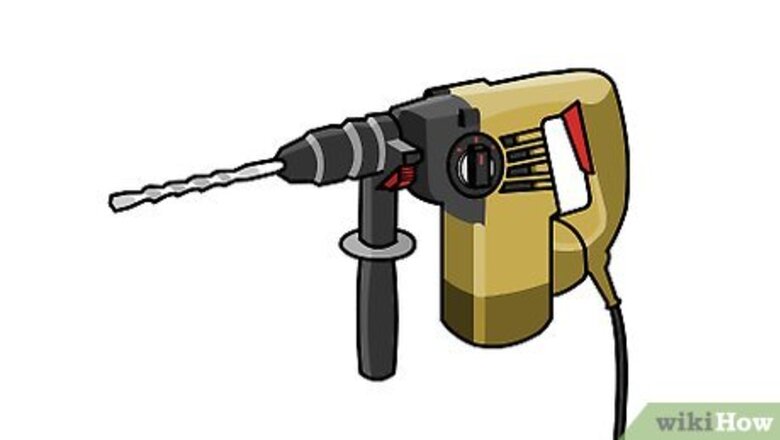
views
Setting Up
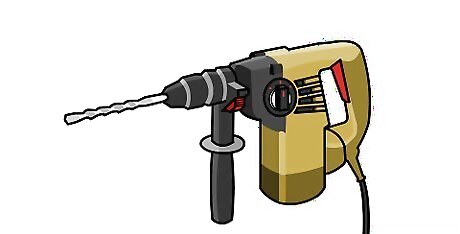
Buy or rent a good hammer drill. If you're just drilling one or two holes for a small project, a regular drill is fine. However, drilling concrete is much easier with a hammer drill, or a rotary hammer for large jobs. These tools fracture the concrete through rapid hammering, then drill to scoop out the broken material. A normal rotary drill makes the job much slower and more difficult, since concrete is not easily shaved away in layers the same way wood and metal are. Pay extra for a hammer drill rental for any job larger than a few holes drilled through cosmetic (non-structural) concrete, such as the softer mix found in modern countertops. It's usually worth it to pay more for a more powerful hammer drill (at least 7 to 10 amps) from a well-known brand. Other beneficial features include a speed setting, depth stop, comfortable grip, and a second handle for your other hand.
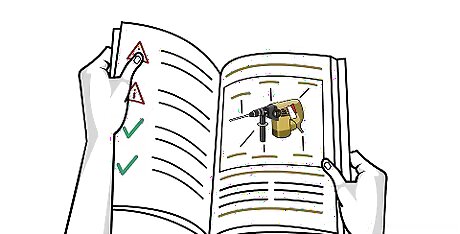
Get to know your tool. Read the user's manual and learn what all the knobs and controls are for. Make sure you are comfortable with your tool before moving on to the next step. Follow all safety instructions. This includes wearing safety goggles to protect your eyes from chips of concrete, hearing protection, and heavy gloves to protect your hands from abrasion and hot drill bits. A respirator is also recommended for larger projects that create a lot of dust. Hammer drills can be switched to a non-hammering drill setting simply by turning the collar.
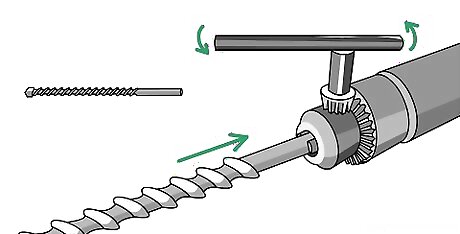
Insert a high quality masonry drill bit. Carbide-tipped masonry bits intended for hammer drills (or labeled "rotary/percussive") are designed to withstand the force of hammering and drilling dense concrete. The flutes of the drill bit must be at least as long as the hole you plan to drill, since they are important for evacuating dust out of the hole. Rotary hammers require specialty drill bits, called SDS or SDS-MAX (for holes up 5/8" in diameter) or Spline-Shank (for holes 3/4" or larger). Reinforced concrete is much more difficult to drill if you need to drill deeper than the steel rebar. Switch to a special rebar-cutting bit once the drill hits metal. Slow down and pause occasionally to prevent overheating.
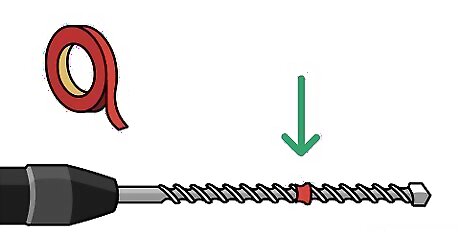
Set the depth. Some drills have a depth setting or depth control bar. Read the user manual and learn how to use it. If your machine does not have depth control, measure and mark the required depth on the drill bit with a pencil or masking tape. If you're not sure how deep to drill, follow these guidelines: Because concrete is a hard, dense material, screws embedded 1 inch (2.5 cm) deep are sufficient for hanging light-weight objects. Heavier-duty projects require longer screws or concrete anchors, which should list the minimum embedment on the packaging. Add an additional ½" (6 mm) to the embedment to allow room for the dust that accumulates during drilling. You can reduce this length if you plan to remove the dust afterward (described below). For hollow concrete blocks or thin concrete surfaces, check the fastener specifications. Some plastic anchors require a solid backing, and will fall out if you drill through the other side.
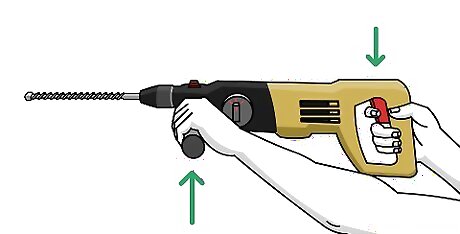
Hold your drill properly. Hold the drill with one hand like a gun, with your index finger on the "trigger". If the drill has a handle for your other hand to hold, use it. Otherwise put your other hand at the back of the drill. EXPERT TIP Gerber Ortiz-Vega Gerber Ortiz-Vega Masonry Specialist Gerber Ortiz-Vega is a Masonry Specialist and the Founder of GO Masonry LLC, a masonry company based in Northern Virginia. Gerber specializes in providing brick and stone laying services, concrete installations, and masonry repairs. Gerber has over four years of experience running GO Masonry and over ten years of general masonry work experience. He earned a BA in Marketing from the University of Mary Washington in 2017. Gerber Ortiz-Vega Gerber Ortiz-Vega Masonry Specialist Expert Warning: Put on the appropriate safety gear, including glasses, a ventilator mask, safety glasses, gloves, and heavy pants. Also, cover any nearby doors or windows with plywood, and move any vehicles out of the area.
Drilling Concrete
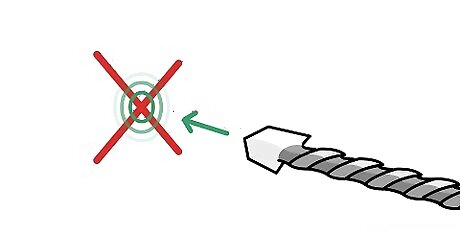
Mark the drilling spot. Mark the point on the wall where you want to drill using a soft pencil with a small dot or cross.
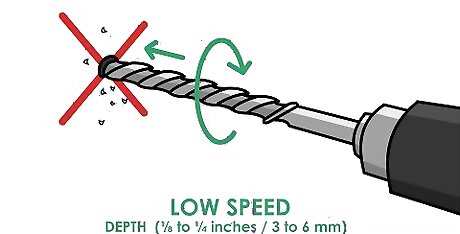
Drill a pilot hole. Place your drill on the mark and drill briefly, using a low speed (if your machine has speed control) or in short bursts (if it doesn't). Make a shallow hole (⅛ to ¼ inches / 3 to 6 mm) to help guide your drill for the real hole. If the project requires a large diameter drill bit, consider using a smaller drill bit for the pilot hole. This will increase the drill's stability.
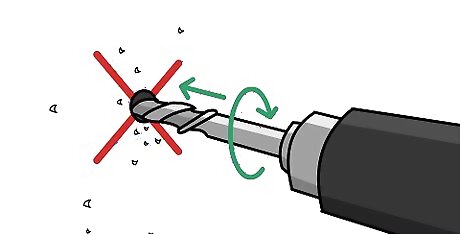
Continue drilling with more power. Turn on the hammer function if your drill has one. Place the drill in the pilot hole, keeping it exactly perpendicular to the concrete surface. Start drilling with firm, but not forceful, pressure to push the drill forward. Gradually increase the drill speed and force if necessary, but make sure the drill is stable and under your control at all times. Concrete is not a homogenous material, and the drill bit can easily skate if it hits an air pocket or pebble. Apply enough pressure to hold the drill in place, but do not force it forward (this increases wear on the bit and can even break it). You will learn the right amount of pressure from practice.
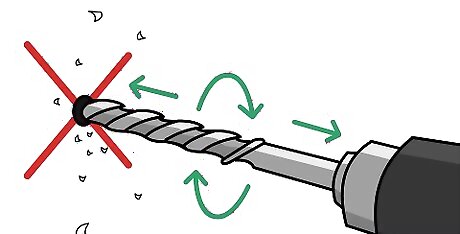
Pull the drill out periodically. Bring the drill back slightly and press it back in again every ten or twenty seconds. This helps pull dust out of the hole. Occasionally stop the drill and pull it out to let it cool for a few seconds. This is especially important for ordinary rotary drills, since they can easily overheat during a lengthy drilling process. You may feel a little bit of recoil and kick from the drill.

Break through obstructions with a masonry nail. Sometimes, a drill does not go as expected. If you hit an especially hard piece of concrete, insert a masonry nail into the hole and hammer it in to break up the concrete. Take care not to drive the nail too deep to easily remove. Insert your drill back and continue drilling. If you see sparks or see metal, you have hit rebar. Stop drilling immediately and switch to a rebar-cutting drill bit until you are past the obstruction.
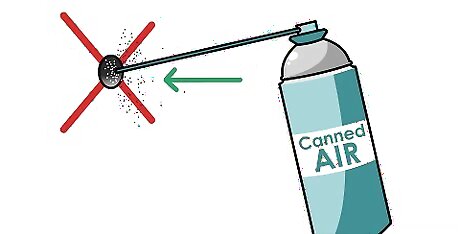
Blow out the dust. Removing dust improves the strength of concrete anchors. Use a squeeze bulb or can of compressed air to remove concrete dust from the hole, then vacuum it up. Leave your goggles on while doing this to protect from dust and debris. Concrete dust can be hazardous to breathe in, so make sure you wear a mask during this process. You can also extract the dust by using a damp cotton swab to wipe it out.















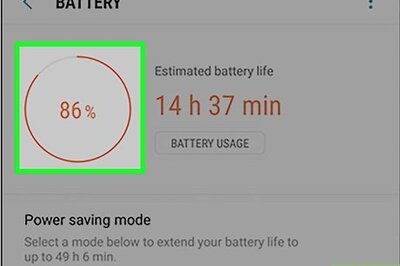




Comments
0 comment